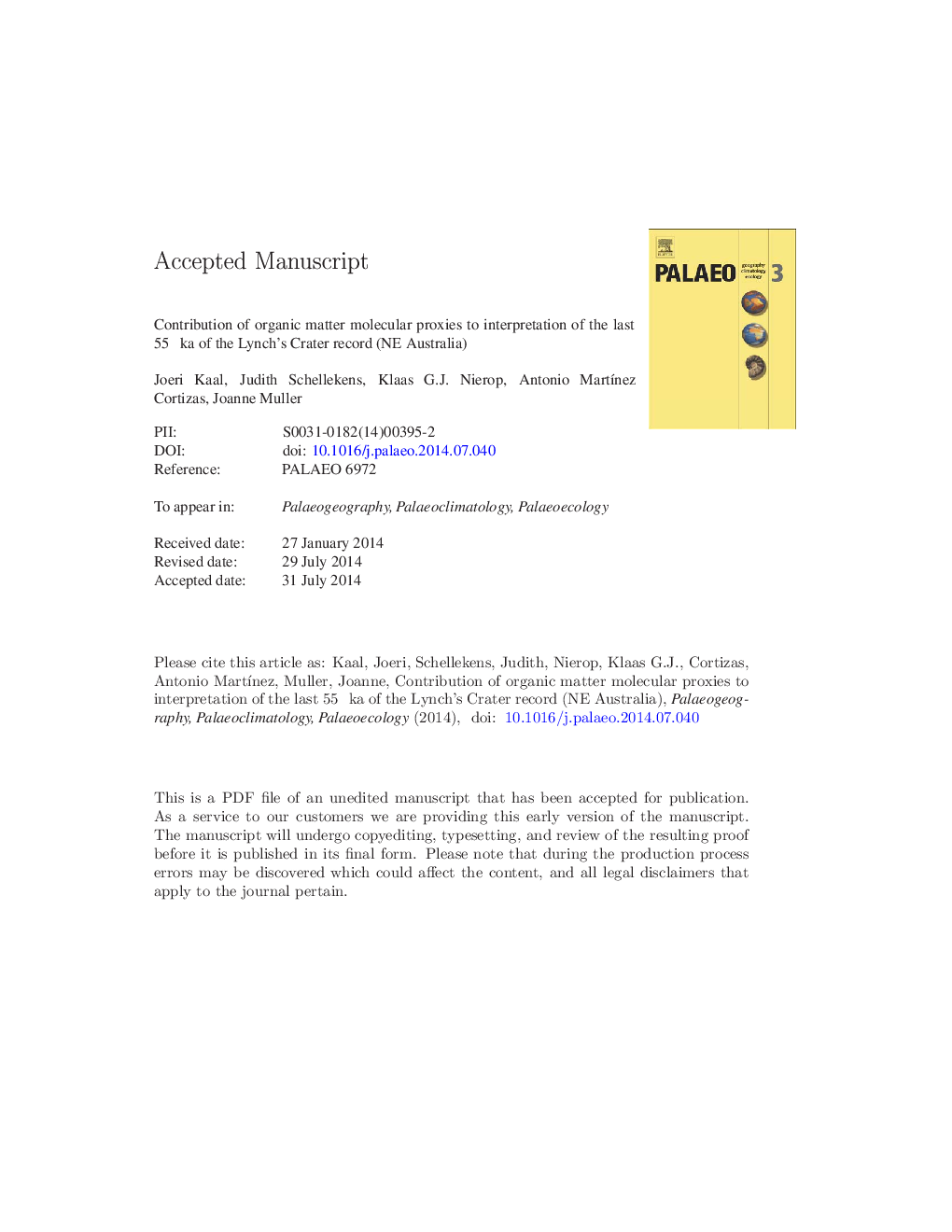| کد مقاله | کد نشریه | سال انتشار | مقاله انگلیسی | نسخه تمام متن |
|---|---|---|---|---|
| 6349933 | 1622176 | 2014 | 52 صفحه PDF | دانلود رایگان |
عنوان انگلیسی مقاله ISI
Contribution of organic matter molecular proxies to interpretation of the last 55Â ka of the Lynch's Crater record (NE Australia)
دانلود مقاله + سفارش ترجمه
دانلود مقاله ISI انگلیسی
رایگان برای ایرانیان
موضوعات مرتبط
مهندسی و علوم پایه
علوم زمین و سیارات
فرآیندهای سطح زمین
پیش نمایش صفحه اول مقاله

چکیده انگلیسی
Pyrolysates were dominated by methylene chain compounds (MCCs) and lignin products (methoxyphenols). Concomitant increases in MCCs and aquatic source indicators (biogenic opaline silica, Si:Al ratio, SEM-visible debris of sponges and diatoms and aquatic pollen taxa), which roughly coincide with abrupt climate events in GISP2 δ18O (Heinrich event H3, H1, 8.2 ka and oscillations at 33-36 ka BP), reflect transitions from peat (dominated by lignin from terrestrial plants) to lacustrine (MCCs from aquatic plants) conditions. The evidence points towards wet conditions causing the accumulation of layers rich in inorganic sediment during H events, favouring the hypothesis of a southward ITCZ shift, rather than an ENSO-induced northward shift, as the underlying mechanism. This contradicts previous studies using the “degree of peat humification” index (DPH). We measured DPH and the extracts and residues by PY-GC-MS, to better understand the validity of this surface moisture proxy. Paradoxically, high DPH corresponds to the relatively young (< 15 ka) ombrotrophic peat environment, as DPH relies on the proportion of extractable carbohydrates concentrated in this part of the core, while deeper and unarguably more evolved layers are comprised of alkali-inextricable lignin and MCCs. Therefore, DPH does not accurately reflect humidity-controlled degradation/preservation dynamics and its use for studying climate change in complex records, such as Lynch's Crater, is cautioned. Finally, the decoupling of humidity conditions from changes in regional arboreal vegetation supports the hypothesis of an anthropogenic- rather than climate-driven shift towards sclerophyllous vegetation since 45 ka, but the hydroseral complexity of the system demands caution on this matter.
ناشر
Database: Elsevier - ScienceDirect (ساینس دایرکت)
Journal: Palaeogeography, Palaeoclimatology, Palaeoecology - Volume 414, 15 November 2014, Pages 20-31
Journal: Palaeogeography, Palaeoclimatology, Palaeoecology - Volume 414, 15 November 2014, Pages 20-31
نویسندگان
Joeri Kaal, Judith Schellekens, Klaas G.J. Nierop, Antonio MartÃnez Cortizas, Joanne Muller,